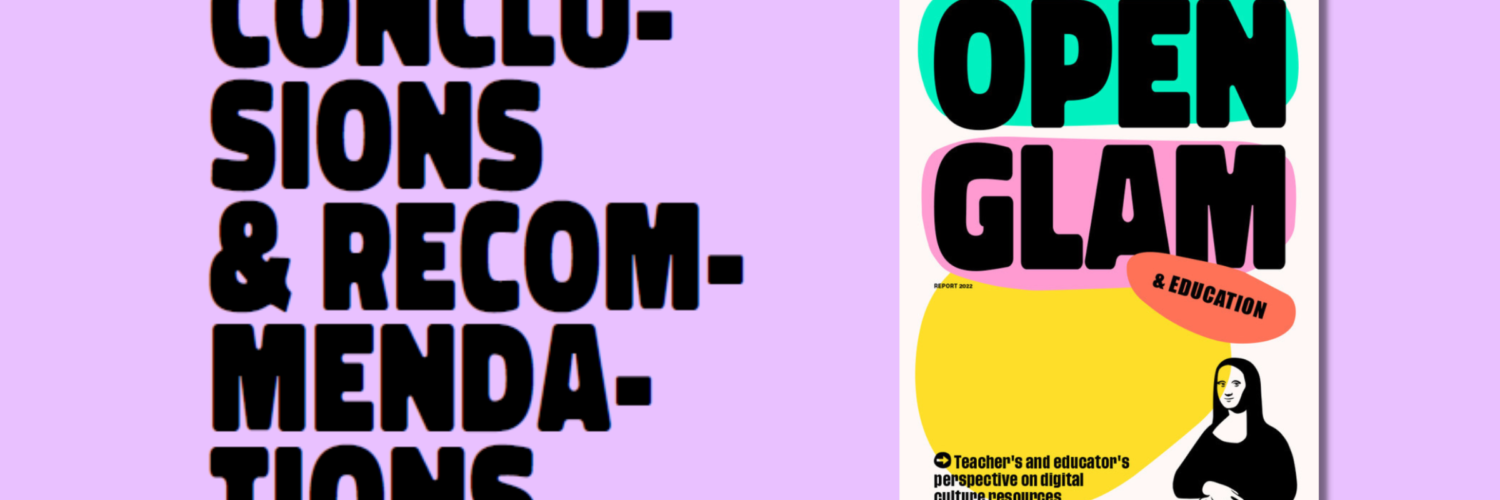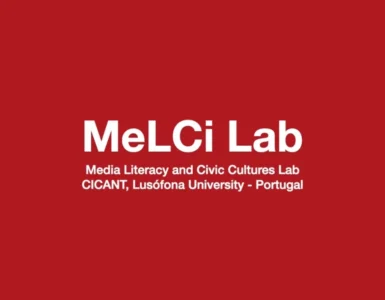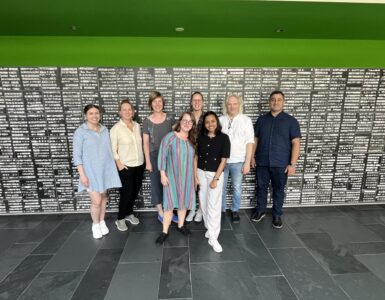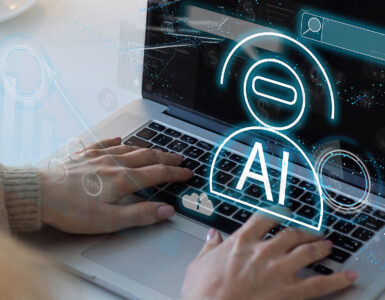A study conducted by Centrum Cyfrowe in partnership with Europeana, EuroClio and Creative Commons.
This report presents findings of the Open GLAM & education research project which attempts to understand the importance of online heritage-based tools, resources and digitised collections for formal and non-formal education in the EU countries.
Recommendations
I. Ensure and support the creation of tailored digital tools & resources and online collections for educational purposes by cultural heritage institutions

Creation of open and accessible tools & resources for education (formal and non-formal) should be at the heart of the operational processes of cultural heritage institutions active in the digital realm. They should be tailored to the needs of relevant communities and reflect on the role of cultural heritage institutions of putting in their actions societal and public purposes first. EU, national, regional and community level strategies and financial programmes regarding digitisation of cultural heritage should explicitly support creation of tools & resources dedicated to educational (formal and non-formal) purposes and digital collections open for educational reuse. Cross-sectoral collaboration leading to creation of fit-for-purpose heritage-based open educational tools & resources should be ensured. The exchange of knowledge and best practices between different cultural heritage institutions and educational institutions, as well as technology developers should be encouraged and supported to maximise the quality and impact of the newly designed resources.
II. Make heritage-based tools & resources for education open and accessible
Copyright law should not constitute a barrier for teachers and non-formal educators preventing them from the access, use, reuse, adaptation, public performance and dissemination of heritage-based tools & resources for any educational purpose. Heritage-based tools & resources for education should be free and available under open licences or as public domain with clearly labelled, easy to find and user-friendly rights statements and terms of use. The above-listed provisions should be easy to understand and to implement by teachers, non-formal educators, students and pupils. An awareness-raising strategy facilitating promotion and communication about the availability of existing heritage-based tools & resources for educational purposes should be orchestrated among various educational institutions at local,national and international levels. Actions aimed at making heritage-based tools & resources less dispersed, easier to find and search should be prioritised. It is also essential to ensure that cultural material digitised with public funding is made available through national and international aggregating platforms (such as Europeana). Heritage-based tools & resources for education should be accessible to people with disabilities, thus it is necessary to follow accessibility guidelines while creating them. Heritage-based tools & resources for education need to be made available transnationally, thus, to ensure international access to digitised cultural heritage creation of multilingual resources should be strengthened.
III. Prioritise the creation of engaging, inspiring and cutting-edge heritage-based tools & resources for education and provide training for employees of cultural heritage institutions

Evidence-based standards and guidelines for the creation of heritage-based tools & resources for educational purposes should be developed in order to ensure high quality of newly created materials. The creation of engaging, inspiring, cutting-edge heritage-based tools & resources for education requires knowledge of the latest technological trends, digitisation standards, accessibility guidelines and other. Thus, it should be accompanied by relevant training and programmes for the employees of cultural heritage institutions. The process of creation of heritage-based tools & resources for education should put the end-users’ needs first. Actors from different sectors should be involved early in the process of creating and relevant research about end-users needs to be carried out. Heritage-based tools & resources for
education should encourage reuse of the materials and enable teachers and non-formal educators to create their own educational materials which meet end-users’ specific needs. Heritage-based tools & resources should be engaging, inspiring and enable teachers and non-formal educators to prepare innovative and activity-based lessons. Cross-sectoral, creative cooperation between cultural heritage institutions, educational institutions, technology developers and other actors should be encouraged in order to enable the creation of innovative solutions regarding the creation of heritage-based tools & resources.
IV. Facilitate capacity building for teachers & educators to turn them into competent users and creators of heritage-based educational resources
Relevant training for teachers and non-formal educators should be provided in order to enable them to fully understand and benefit from the great potential of heritage-based tools & resources for conducting educational activities. It is crucial to provide teachers and non-formal educators with the competencies and knowledge needed for the effective searching strategies of heritage-based tools & resources and the knowledge about national and international aggregating platforms (such as Europeana). Apart from the actions aimed at making the heritage-based tools & resources free and available under open licences or as public domain with clearly labelled, easy to find and user-friendly rights statements, copyright training should be provided for teachers and non-formal educators. Such training is crucial for encouraging them to use heritage-based tools & resources broadly.
Sneak peek at the findings:
According to the teachers and non-formal educators, the more heritage-based tools &
resources and online collections are available for educational purposes, the better:
- 94% of them agree that digital heritage-based tools & resources are important and help teachers and non-formal educators perform educational activities.
- 84% claim that each cultural heritage institution should develop such interactive materials and digital resources.
Online digital collections and their context information are the most frequently used resources published by cultural heritage institutions:
- 85% of surveyed teachers and non-formal educators use online digital collections while conducting educational activities.
- 70% of respondents confirm the use of educational interactive web-based materials (games, quizzes, virtual tours).
- 64% admit that they use digital educational resources (lesson plans, learning scenarios, tutorials).
The study showed that huge dispersion and difficulty with searching and finding heritage-based tools & resources and online collections are the major barriers for teachers and non-formal educators:
- 40% of respondents claim “they are hard to find”,
- 32% state “they are not gathered in one place, platform, catalogue”,
- 32% believe “they are not well promoted.
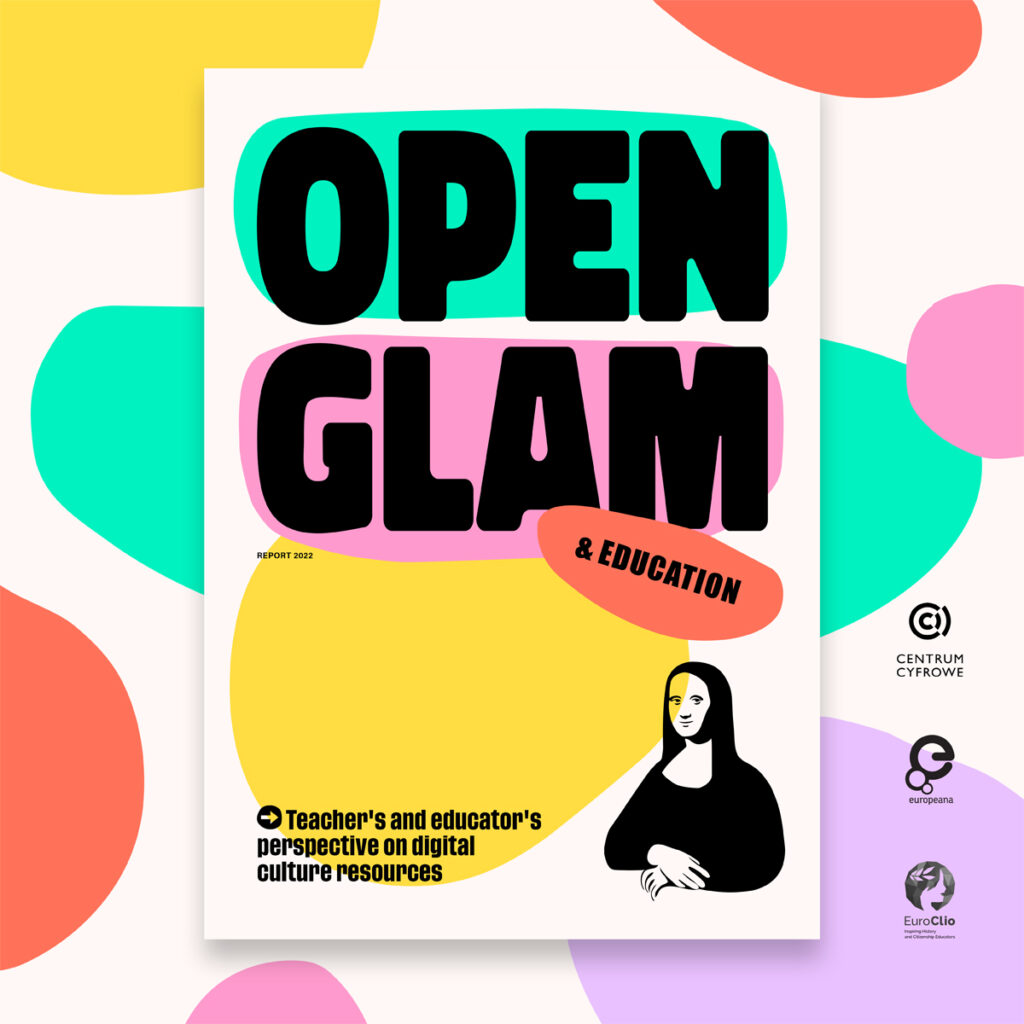
You can find the report, charts, collected data, and questionnaires HERE.
by Centrum Cyfrowe in partnership with Europeana, EuroClio and Creative Commons.

